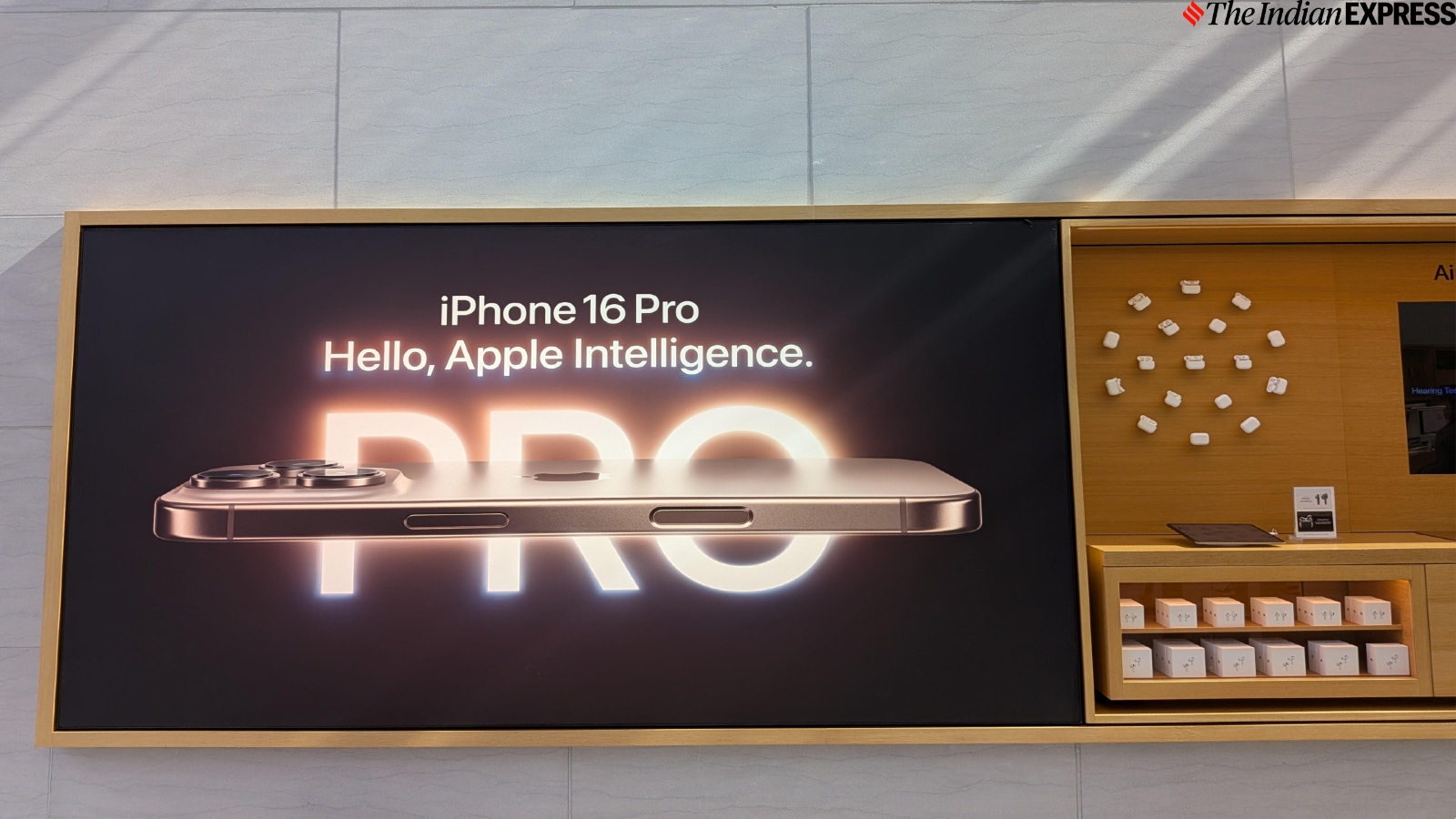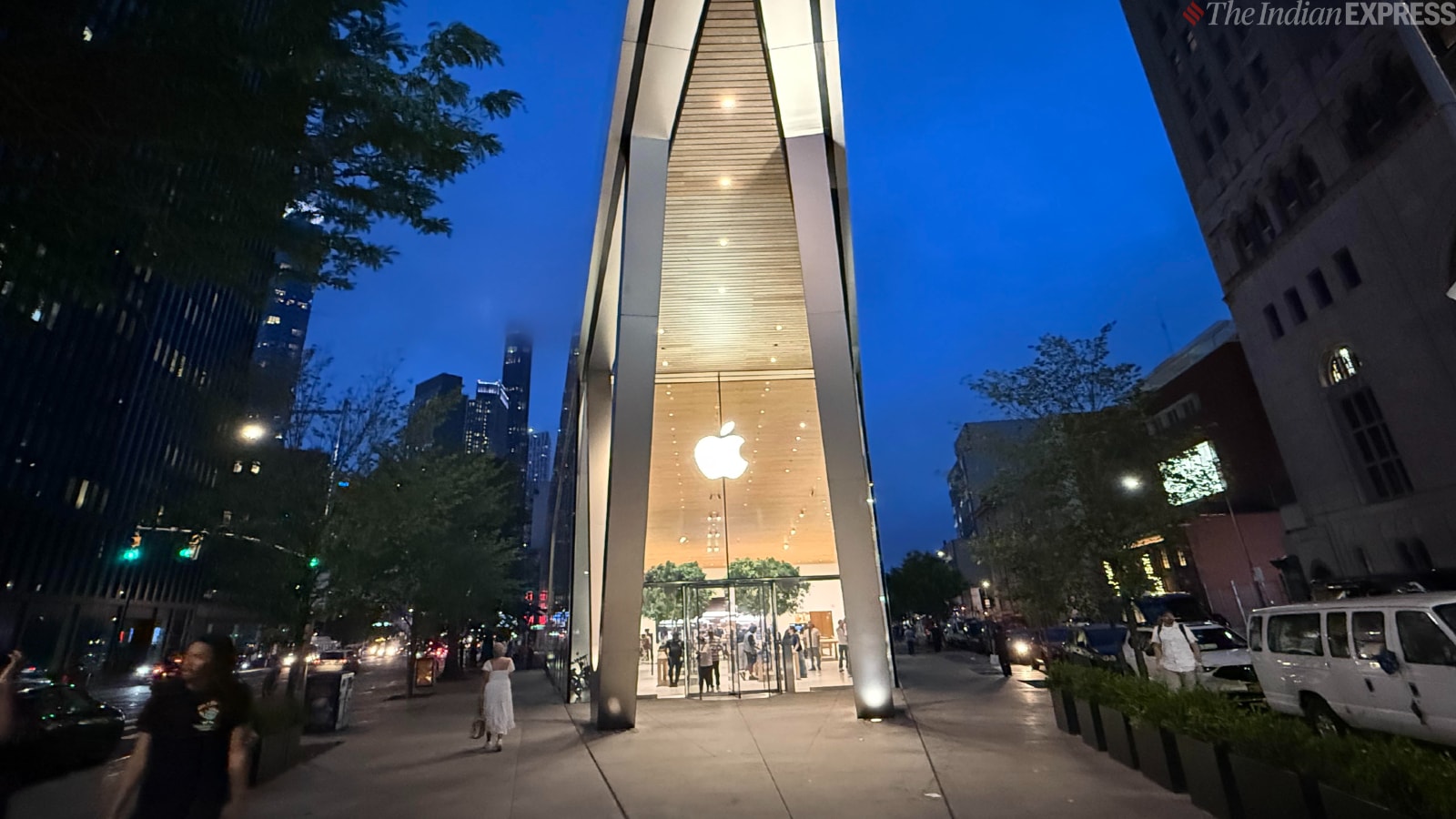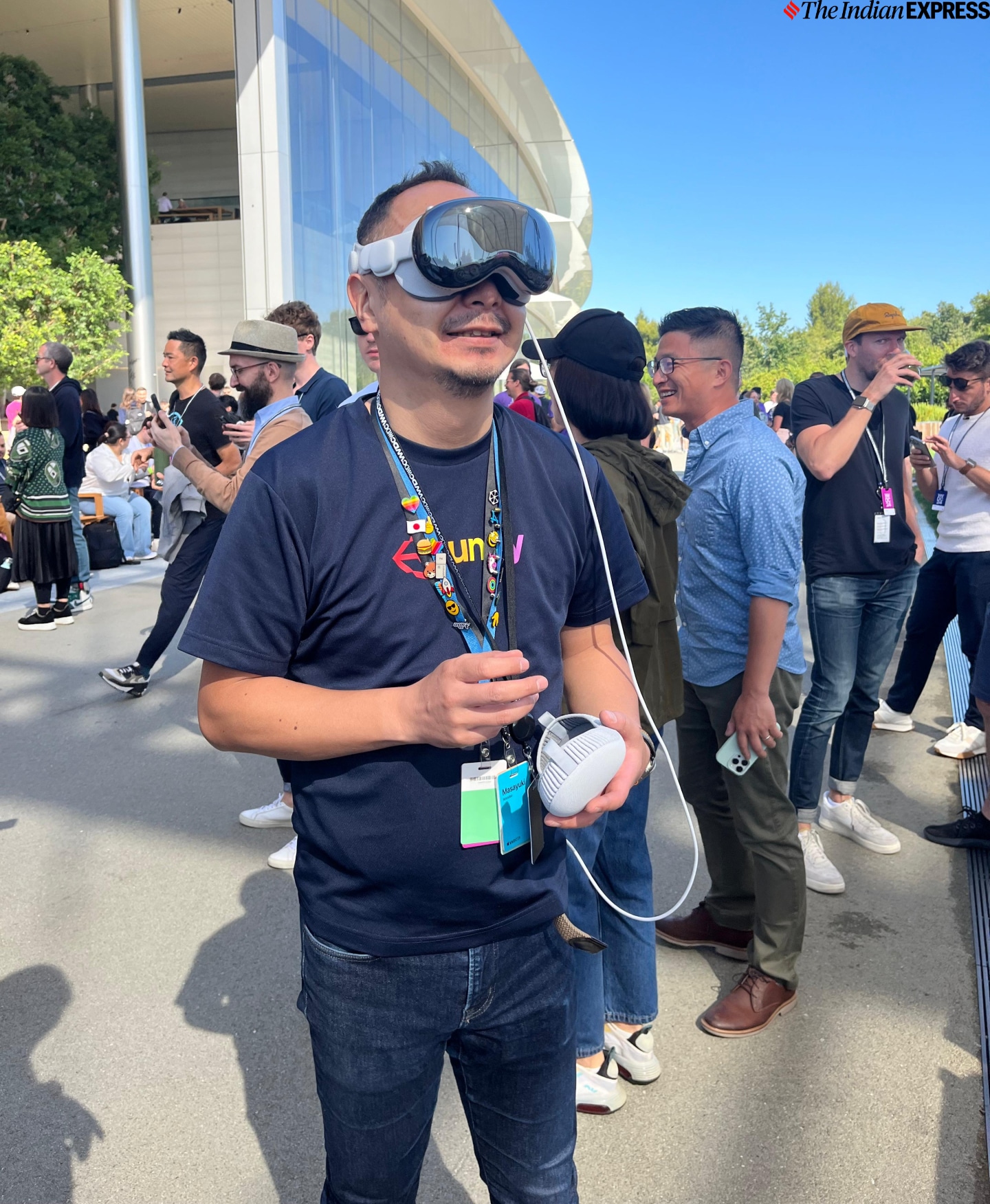Consumers, too, are likely to ask: What’s new in the iPhone 17, and how different is it from last year’s model? Cook and his team have a lot to answer, not just whether the iPhone still dominates consumers’ digital lives, but also about the direction the company is headed, with only this device remaining its crown jewel as it lags behind peers in the artificial intelligence race.
While the iPhone has remained Apple’s best-selling product since co-founder Steve Jobs launched it in 2007, bringing in billions of dollars in profits, the company now faces a tough choice: either look beyond it or reinvent the device to retain its place among the world’s most valuable tech companies.
 Delays and underwhelming capabilities have put Apple on its back foot in the AI space. (Image credit: Anuj Bhatia/Indian Express)
Delays and underwhelming capabilities have put Apple on its back foot in the AI space. (Image credit: Anuj Bhatia/Indian Express)
Questions about Tim Cook, new products
Apple has faced setbacks in entering new markets, with past attempts like the fully autonomous car project and the muted reception of the Vision Pro headset raising concerns that the company has lost the innovative streak it was once known for.
Many in the past few months have also questioned whether Tim Cook is still the right person to lead one of the world’s most valuable companies, amid concerns that Apple has fallen behind in AI, a technology rapidly being adopted by both consumers and businesses, at a time when smartphone sales, Apple’s biggest revenue driver, have plateaued. Apple needs a new hit product.
Replacing Cook suddenly might not be the right move. The company is betting on growth in markets like India, and Cook, widely regarded as a supply chain hero, is trying to replicate how Apple built its presence in China. That strategy may be working for now, as consumers in those markets still view the iPhone as an aspirational product.
But elsewhere, the iPhone is increasingly seen as outdated, leaving Apple walking on eggshells. It still needs to run its core business while continuing to work internally on its next breakthrough product. We don’t yet know what that could be.
Story continues below this ad
 The iPhone is considered the safest bet for Apple to dominate the tech market, but the clock is ticking on what the future holds. (Image credit: Anuj Bhatia/Indian Express)
The iPhone is considered the safest bet for Apple to dominate the tech market, but the clock is ticking on what the future holds. (Image credit: Anuj Bhatia/Indian Express)
Decoding iPhone 17
For now, the iPhone 17 is expected to drive Apple’s revenue for the foreseeable future. For the first time in years, Apple may be considering a significant redesign to stay competitive and retain consumers within its ecosystem. There will be four new models in the iPhone 17 lineup, but an ultra-thin iPhone 17 Air will replace the Plus model.
The base iPhone 17 model is likely to feature a slightly larger 6.3-inch screen with a 120Hz display, a substantial upgrade from the current 60Hz, and a rumoured 24-megapixel front camera, along with new colour options. The Pro model’s upgrades will be most noticeable on the back. Based on leaked case designs, the three rear cameras may be arranged in a rectangular bar that stretches from one edge of the device to the other. The highest-end model, the Pro Max, is expected to see fewer upgrades, with the most notable change being a slightly thicker body, likely to accommodate a larger battery.
The fourth model, a new addition and a replacement for the Plus model, could be Apple’s slimmest iPhone ever. The Air model, as it might be called, is rumoured to have a profile thickness of just 5.5 mm, making it about 0.08 inches thinner than current iPhones. It will also feature a 6.6-inch screen and a single front-facing camera.
Apple appears to be following in the footsteps of Samsung, which earlier this year launched the Galaxy S25 Edge, measuring just 5.8 mm.
WATCH | Samsung folds, flips, and steals the show 🌌📱
Samsung’s new $2000 Galaxy Z Fold 7 headlines the company’s Unpacked event, showcasing a thinner and lighter book-style foldable phone. We also saw the launch of the Galaxy Z Flip 7, a flip-style foldable phone with a bigger… pic.twitter.com/9w482qEsNy
https://platform.twitter.com/widgets.js
Story continues below this ad
Fending off Samsung
But Apple is likely to market the iPhone 17 heavily to attract both new and existing consumers, especially in key markets like the US and China. The reason? Stiff competition. In the second quarter, shipments from Samsung surged in the US, with its market share rising from 23 per cent to 31 per cent compared to the previous period, according to data from Canalys. Meanwhile, Apple’s market share declined to 49 per cent from 56 per cent.
Apple remains the top player in the US smartphone market, and the second-largest globally in terms of phone shipments. But for the first time in a decade, cracks are starting to appear in the iPhone empire it built. China is another critical battleground, where domestic brands like Huawei continue to gain ground.
Samsung, Apple’s biggest competitor, has gained ground in the US, showing how the South Korean company is willing to experiment with foldable phones at the high end, often priced above the iPhone, while also offering a wider range of products across different price points. Samsung’s Z lineup, which includes its foldable devices, can cost as much as $2,400 in the US. Huawei has adopted a similar strategy in China, where it remains a dominant player, providing Apple with fierce, knock-out competition.
Apple doesn’t offer a foldable phone, while both Samsung and Huawei do, making the Cupertino-based company seem less cool among young, affluent consumers. The iPhone, meanwhile, still looks essentially the same: a rectangular piece of glass with a touchscreen on the front and cameras on the back. That might change, as Apple is rumoured to launch a foldable phone as early as next year, putting the company in direct competition with Samsung and Huawei.
Story continues below this ad
The strong early reception for Samsung’s Galaxy Z Fold 7, though the company doesn’t provide sales numbers, experts say the book-style foldable has received more preorders than any previous Samsung foldable, suggesting that the form factor has matured, giving Apple the perfect runway to launch a foldable iPhone.
![]() Google, whose Android operating system is the only major rival to Apple’s iOS, has been adding new generative AI features in every few months. (Image credit: Anuj Bhatia/Indian Express)
Google, whose Android operating system is the only major rival to Apple’s iOS, has been adding new generative AI features in every few months. (Image credit: Anuj Bhatia/Indian Express)
New challenges
The iPhone 17 lineup may keep Apple afloat for a few more quarters, but the company’s challenges have only grown in 2025. Among them: President Donald Trump’s renewed tariff threats, an antitrust lawsuit accusing Apple of monopolising the smartphone market, and new restrictions from the European Union on how it operates its App Store. At the same time, Apple faces mounting competition from rivals like Samsung in an increasingly challenging market for premium-priced smartphones.
On the software front, Apple is under pressure from Alphabet’s Google, which is rapidly integrating AI features into its Android operating system. Google’s fast-growing Pixel smartphone line also poses a long-term threat.
There are also growing concerns about whether Apple’s ecosystem still has the stickiness to retain existing consumers and encourage them to continue purchasing products like the iPhone. This power play appears to be shifting, as major companies such as Google (through its Pixel brand), Samsung, Huawei, and Xiaomi are building their own ecosystems, with products that seamlessly integrate and work together. Samsung, for example, offers a diversified portfolio, with its devices working seamlessly alongside its smart appliances and the same applies to Xiaomi.
Story continues below this ad
 Apple’s amtitious Vision Pro headset has been a commercial flop due to its high price and lack of apps and content. (Image credit: Anuj Bhatia/Indian Express)
Apple’s amtitious Vision Pro headset has been a commercial flop due to its high price and lack of apps and content. (Image credit: Anuj Bhatia/Indian Express)
Adding to Apple’s ecosystem challenges is Meta, which has seen rapid adoption of WhatsApp in the US, now boasting over 100 million users. This indirectly puts pressure on Apple, as iMessage has long been a key reason many Americans choose an iPhone over Android. The rise of alternatives like WhatsApp could reduce that advantage, benefiting competitors like Samsung and Motorola, weakening Apple’s dominance in the US.
The biggest concern is whether Apple can remain competitive and deliver AI features on par with those from Google and OpenAI. In March, the company announced a delay in the release of its revamped, AI-enhanced Siri, an upgrade expected to enable the virtual assistant to answer more complex questions with personalised responses and handle tasks on a user’s behalf.
Still, CEO Tim Cook said the company is “making good progress on a personalised Siri.”
More than just redesigning the iPhone, experts say Apple’s real need is to improve its software and build a robust layer of artificial intelligence. Apple Intelligence, introduced in 2024 following the iPhone 16’s September launch, included tools such as notification summaries, phone call transcriptions, and photo object removal. However, many of these features have so far felt underwhelming.
Story continues below this ad
Apple needs a fresh perspective in tech, but with CEO Tim Cook now 64, and a string of high-profile departures from the company in recent months, Cupertino’s present seems increasingly reliant on the iPhone, a troubling sign for what was once the most respected tech company in Silicon Valley. Competitors like Meta, for example, continue to poach top AI talent from Apple and are investing billions in smart glasses, looking beyond the smartphone market.





Average Rating